|
Welcome Bernd! Thanks for taking some time to chat about writing. First, a few quick-fire questions: Skiing or surfing? Cats or dogs? And what is the farthest north you have ever traveled? Skiing, but preferably cross-country which can sometimes turn into downhill-skiing. Dogs! The North Cape in Norway. Flying over Iceland, Greenland, and further North doesn’t count. "Skiing, but preferably cross-country which can sometimes turn into downhill-skiing." Many of us (myself included) have longed to travel to distant places these past two years. You divide your time between Istanbul and Berlin, so can you give readers your top restaurant or cafe recommendation for both cities? For Istanbul it’s Çiya Sofrası, located in Kadıköy on the Asian or Anatolian side as Turks say. Two coffee places for Berlin, if you allow, very different in character: Café Savigny in Charlottenburg (rather cozy, some outside seating, with many newspapers) and Café Einstein in Tiergarten (old villa, Viennese style, very nice summer garden). Few writers struggle to start books and almost every one I know of struggles to finish them. As a prolific writer of non-fiction who has completed a number of books, what do you think the key to finishing a book is? Are there any habits, strategies, or frameworks that have helped you reach the end? Writer’s block is not really part of my experience. I never had to force myself and mostly had tight deadlines from my editors which helped. The expectation to see the book in print, my impatience, really helped. In retrospect, I wish I had taken more time with some of the books, just to enjoy the time spent with them more. I more or less see all of them as “research projects”, even though they didn’t result in academic books. Topics explored in your books include the cultural history of orchards, human fascination with birds, and even such concepts as night and winter. As many writers of fiction (I am thinking either historical or science fiction specifically) struggle to feel ‘qualified’ enough to write to this level of depth and accuracy, what advice do you have for writers who want to write like experts in a particular field? I hope I don’t come across with an expert’s attitude. I often see myself as mediating between experts and a readership that’s interested in a particular, popular topic. It’s really important to have a competent editor and one or two experts from the field who can check books for accuracy before they go into editing. For university presses this is common practice, as you may know. So I recommend that writers connect with a researcher in the field who may not have the time or inclination to write a popular, non-academic book him or herself and is happy to comment. "I often see myself as mediating between experts and a readership Extreme North, your most recent publication, has been described as a cultural “cabinet of wonders” as you explore the northern cultures that gave rise to both historic and popular myths about the north. What drew you to this topic and do you feel you achieved what you set out to accomplish? In part, it developed from my work and book on the experience of winter across the ages titled Winterlust. My travels in Scandinavia, the study of the Swedish language, an interest in history and in the making of myths or fictions also play a role here. Without having all these images and memories from my trips this book wouldn’t have been possible or turned out very differently. I wanted to pull different threads together, most importantly the connection between Romanticism, anti-semitism, and the fictions of white supremacy and ‘Nordic’ superiority. Extreme North is not a cultural history of the Northern cultures themselves, which would easily have filled a thousand pages, but the ways in which ideas about “the North” have been appropriated and instrumentalized for other purposes. And yes, I’m really quite satisfied with the result and the reactions to the book have been mostly positive so far, but I’m not saying that the story is ‘complete’ or couldn’t have been told in other ways. "Extreme North is not a cultural history of the Northern cultures themselves, which would easily have filled a thousand pages, but the ways in which ideas about “the North” have been appropriated and instrumentalized for other purposes." One of the central threads in the book is how these northern myths have been used to justify racist and eugenic ideologies that still pervade Western culture today. As a writer who draws great personal and creative inspiration from the myths, I find this both heart-breaking and critical to address every time this comes up in conversation. My question for you is this: what is your message for creatives who draw from this intriguing and often problematic body of myths? This is a very important question, but I’m not sure if I have a satisfying answer. I think it’s important to keep in mind that these myths have been passed on from generation to generation, sometimes across language barriers and certain religious filters. So I would not see them as absolute truths, there always remain some questions. I’m skeptical when someone tells me that this is how it “really” happened. There are some really interesting books that tackle history from a more scientific or anthropological point that may help to put things in perspective. Please let me recommend Neil Price’s Children of Ash and Elm. Everybody has to decide for himself or herself how far to go with using the stories and myths. I don’t feel like being in a position to tell people what they should do. At the risk of asking too grand a question, what would you say is the greatest gift that cultures of the north have to offer the rest of the world? If we refer to the indigenous cultures of the North, I find astonishing how well, over several thousand of years, they adapted to a really challenging environment and climate. If we talk about non-indigenous Scandinavian culture, I’m impressed by the high standards of education, health care and social welfare in general - the ‘Nordic’ model, even though I’m aware that there are some cracks in the system. There is also a sense of being in touch with nature and enjoying the outdoors as well as the comfy indoors that I see in many Scandinavians and that I find adorable - in particular, concepts such as friluftsliv and hygge. Not sure if it belongs here, but I’m a big fan of the Danish movie directors Susanne Bier and Thomas Vinterberg (and their films). And of actors such as Paprika Steen and Mads Mikkelsen! Last, but not least, where can readers find a copy of Extreme North? And where can they discover your other publications? My friend Brendan from New York told me that you can find it on the table with “notable nonfiction” at the fabulous Strand Bookstore. Or any other bookstore where you may have to order it. Also for the other books. Discover more from Bernd Brunner by visiting his website!
0 Comments
Welcome Cat! Thanks for taking some time to chat about writing. First, a few quick-fire questions: What is your writing beverage of choice? Which of the nine worlds of Norse mythology would you most like to visit for a holiday? And if you could cast anyone as Sigyn in a movie adaptation of The Goddess of Nothing at All then who would it be? Thank you for having me! I’m so thrilled! Writing Beverage: A giant glass of ice water. I’m working on being a hydrated human. Nine Worlds Holiday: Alfheim. I don’t need to be in the middle of any Aesir/Vanir/Jotun wars, so Alfheim seems like the most chill place to not get murdered. I also imagine it to be quite pretty. Casting Sigyn: I think I’ll go with Zendaya with Mary Jane from Spider-man vibes. Nerdy, confident, self-sufficient. However, if I wanted to stick to the themes of the book, I’d hire an up-and-coming queer woman looking for a breakout role, because that’s the perfect description of Sigyn in the first place; someone who knows what they want but is still waiting for their big break. "Casting Sigyn: I think I’ll go with Zendaya with Mary Jane from Spider-man vibes. We have a unique connection, though we both live on opposite sides of the globe: we are both Canadians! How has being Canadian influenced your journey as a writer and why do you think so many Canadians (you and I as prime examples!) are drawn to Scandinavian mythology? Being Canadian often comes with certain privileges that other countries don’t have immediate access to. Despite growing up in less than ideal circumstances, I had access to education and free time and libraries, and all of that plays into becoming an author. On the other hand, however, I always felt a personal lack of culture and tradition growing up. Perhaps that’s simply an issue of the grass always being greener somewhere else, or because growing up in a small backwater town didn’t provide for a lot of cultural experiences. I was always looking for something to fill that void, and often found it through story. "On the other hand, however, I always felt a personal lack of culture and tradition growing up... As for why Canadians are drawn to Scandinavian mythology, I’ve personally found a sense of ‘home’ in the tone and setting. Scandinavian people worked hard on land and sea, suffered through harsh winters, and also had bears coming up on their back porch to see what’s for dinner. I’m half Newfoundlander, half Nova Scotian, and in my rural experience, we’re generally a humble, blue-collar people with a history of hard work and sailing and making the best of things. Even the landscape of Newfoundland is full of fjords and puffins. Greek, Roman, and Egyptian mythology take place in these bright, warm worlds that seem so foreign to me. But dark humour, harsh snowstorms, adversity? That was something I understood. "Greek, Roman, and Egyptian mythology take place in these bright, warm worlds that seem so foreign to me. But dark humour, harsh snowstorms, adversity? That was something I understood." The Goddess of Nothing at All explores the Norse cosmos through the eyes of Sigyn, known mostly as Loki’s faithful wife. I’ve recently enjoyed other ‘Alternative Perspective’ stories about the Norse myths, including Joanne Harris’ The Gospel of Loki, Geneveive Gornichec’s The Witch’s Heart, and Bjorn Larssen’s Children, so this seems very timely! What drew you to the character of Sigyn and what do you hope readers walk away with after reading this story? It would be romantic to say that I was initially drawn to Sigyn, but I wasn’t. How can you be drawn to someone whose One Job is to hold a bowl really good? But after Neil Gaiman’s rendition was released, I realized there were too many gaps in the story. So I read the Eddas, sure that I’d find answers there. Spoiler alert—I did not. The things that I wanted to know were just gone. Erased. So I started writing my own answers. I was drawn into the questions of cause and effect. Why doesn’t Odin make more logical choices? Why does Loki escalate from this troublemaker to a world-ender? What wouldn’t I do if people sewed my lips shut, tortured me, and took my children away? And finally, what kind of person stands by the man who ends the realms? Who is she? How strong must she have been to have endured all of the things that came before that cave? I had to know who she was. As far as what I’d like people to walk away with, the book is different things to different people. What I do hear over and over from women and non-binary readers is that they’ve lived part of Sigyn’s life. They know what it feels like to be overlooked and underestimated. They’re familiar with expecting nothing. And some of them have loved someone who is… self-destructive in nature. Mostly, I hope that people can have fun with the book, but I hope that it lets some readers feel seen. It was a work of catharsis for me, and maybe it can be that for someone else. The Norse myths are particularly notorious for being hard to adapt; with multiple, conflicting historical sources (few, if any, of which are complete), I’ve found that I do have to take some ‘artistic license’ at times. Were there any gaps in Sigyn’s story that you felt you had to fill in yourself? What was that process like and how did you make those decisions? *Unhinged laughter* Sigyn’s story is 97% gaps. It was both a wonderfully blank slate and a daunting challenge. To get started, I used her surroundings as a template. She has a reputation in some heathen circles as either the abused spouse or child bride, and I knew I didn’t want that. Loki is canonically cunning and handsome. It stands to reason he could find a wife he likes and respects without it having to be heinous, especially if we don’t relegate him to the role of Norse Lucifer. So what kind of woman would Loki respect? Probably someone smart, self-sufficient, bold, and driven. And if we look at so many godly duos across pantheons, we see things like Love marrying War, Earth and Sky, Yin and Yang. So if Loki is wild, unpredictable, and chaotic, Sigyn should be grounded, reliable, and loyal. "And if we look at so many godly duos across pantheons, we see things like Love marrying War, Earth and Sky, Yin and Yang. So if Loki is wild, unpredictable, and chaotic, Sigyn should be grounded, reliable, and loyal." After that, my priorities were to give her active roles in any myth she appeared in, to make sure she had agency even in places where the myths weren’t about her, and to ground every character’s choices in a logic and sense of morality that was true to their character. Those concepts guided all of my narrative choices as to what happened with each myth and how the book progresses from Sigyn meeting Loki in chapter two to the end of the realms. I often reflect on why we, in a modern day society, reach back to mythic narratives such as the Norse myths. What do you think the myths have to offer citizens of a digital, globally connected world which is steeped in science and rationalism? Myth is one of the doorways into something we used to have and no longer do. It speaks of a perceived “simpler time” with different expectations and a sense of magic still left in the world. If you visit the right places on the internet, there’s a resurgence of people yearning for this. Cottagecore, YouTube channels about moving to the woods, an explosion of the tiny house market. You can also see this in the popularization of spiritual practices like witchcraft, heathenry, paganism, etc. Of course, anyone who’s studied ancient Scandinavia, Rome, or Egypt knows that life wasn’t actually simple; imagine telling all of North America that they had to make their own bread every day! And as much as I believe in science and rationalism, they’ve pushed us further from a more natural life that values slowing down. They’ve stolen the idea of magic, something that humanity has always believed in. These myths let us peek back at the past, to witness magic, and believe in something immeasurable, whether that’s abstractly or in the form of a spiritual practice. One of the reasons I think that alternative viewpoint narratives have become so popular, at least here in Canada, is that we ourselves are re-examing and re-evaluating our own colonial history; the ‘good guys’ according to history textbooks don’t seem so good after a closer inspection. Are you hoping to stimulate social or political conversation about our own views of history or are you aiming to simply write a memorable story that engages readers? The examination of colonialism is long overdue. Very little of my book relates directly to that because the world doesn’t need another white Canadian opinion about what we did, but it’s also hard to write about queer Norse gods without reaching into the elimination of queer history. A lot of the world’s history has been examined by cisgender, white, straight, Christian men. Because of the rigidity of the last several hundred years in the west, we’ve seen archaeologists pick up an urn with two female lovers on it and declare them the very best roommates. (If you’re looking for a great beginner’s resource on this idea, the book Ancient Bodies, Ancient Lives: Sex, Gender, and Archaeology by Rosemary A. Joyce is a fantastic place to start.) And before archaeologists, armies were destroying cultures and stripping down religions, often putting an end to generations of happy queer existence. For example, before the land that became Canada was colonized, Indigenous peoples celebrated the Two-Spirit identity. Then Christianity arrived with its rigid ideas of marriage and a penchant for destruction. So we know that queer people have always existed, and were sometimes worshiped, so how did we get from worship to outlaw? "The examination of colonialism is long overdue. Very little of my book relates directly to that because the world doesn’t need another white Canadian opinion about what we did, but it’s also hard to write about queer Norse gods without reaching into the elimination of queer history." Like most things Viking, Christianity showed up and lots of knowledge was lost, so we don’t have a clear picture of queer life. It certainly wasn’t a utopia since (to oversimplify) it was considered an insult to be called “a bottom.” There are many things in the Eddas that could easily be read as queer and many people in the last years have taken up this angle of research. But there are also plenty of people who want to use Viking age culture at the forefront of their supremacist ideology. So when I began writing this book, it was very important to me that the cast of gods were primarily gods who have been overlooked or who were (canonically or not) outcasts, unknown, or marginalized. We may not ever perfectly know what a queer life from that time looked like, but in this respect and many others, I’d love for my readers to be questioning what we know, who told us, and how the past has been coloured by the victors. Can you give us a sneak peek at what your next project will be? Can we expect a sequel or are you exploring something new? I’ve got two projects lined up. First is Book 2, which is going to deal with the aftermath of The Goddess of Nothing at All and will be themed around grief and healing. After that, I’ll be jumping back into a queer witch story that’s highly inspired by puritan witch hunts, the agency of women, and indoctrination. Last, but not least, where can readers find your work and keep up to date on your latest publications? The Goddess of Nothing at All can be found via most major retailers, should be available to request at your local bookstore, and you can even ask your library to order a copy! Try this link to find out where it’s available in your region. The best places to keep up with me are on Twitter, Instagram, or Tiktok, and if you’re a real go-getter, you can sign up for my newsletter via my website! If you preorder, don’t forget to grab your preorder perks here! Sign up for Cat's newsletter via her website to keep up to date on all her latest projects!
Welcome Lyra! Thanks for taking some time to chat about writing. First, a few quick-fire questions: What is your favorite coffee shop in the world? Who is your favorite 18th century rogue? And if you could have one of the treasures that Loki convinced the dwarves to forge for the gods to save his own neck then which one would it be? Thank you so much for having me! Let’s see, my favorite coffee shop in the world would have to be Demel, which is a cafe in Vienna, Austria, and has THE BEST pastries I’ve ever eaten. My favorite 18th century rogue is the Italian adventurer—and all around awful man—Giacomo Casanova. Seriously A+ rogue. Who else would you find selling counterfeit mercury? Love him forever. And if I could have any treasure made by the dwarves... hmmm... that would have to be Gullinbursti, because you’d always have a great conversation starter, and never need a flashlight again. "My favorite 18th century rogue is the Italian adventurer—and all around awful man—Giacomo Casanova. Seriously A+ rogue." You and I share a love of Norse Mythology; in particular, your work focuses on the trickster god Loki. What elements of Loki’s character do you hope to highlight in The Nine Worlds Rising? Are there any misconceptions you want to challenge? What is it about this Norse god in particular that keeps you coming back to write more books? The elements of Loki’s character I hope to highlight in my series are really his complexities. He is a trickster. He is capable of doing both good and bad, helping or hindering. Because his nature is chaos, that chaos ends up affecting everyone and everything around him, and not always for the best. I mean, he does try his hardest, but...there’s still probably a 9 out of 10 chance whatever choice he makes is going to result in some cataclysmic event. But that’s the point, Loki just can’t help himself and keeps getting in his own way, preventing himself from ever having any kind of peace, which, in my series, is truly all he wants. The main misconception about Loki I try to challenge is that he is “the bad guy.” I mean, yeah, Ragnarok wasn’t great, but Loki in the mythology is definitely a figure you can see grow darker and darker as he’s continually pushed, proded, ostracized, and, you know, tied to a rock with his son’s entrails and snake venom dripping over his face. That would give anyone a major case of the grumpies. Villains aren’t born, but made. And I see Loki the “World Breaker” being the creation of the Aesir’s own greed, lies, and broken oaths. As I mentioned earlier, his complexities are an enigma to me I can’t help but explore and try to figure out. Being an outsider also makes Loki relatable and sympathetic, which is only increased when you factor in his own nature forcing him into a cycle of causing pain which he can’t ever seem to escape from. However, there is also the darker side of him. That razor edge filled with spite and danger that takes pleasure in crashing parties and airing out everyone’s dirty laundry. With Loki, there is always a new layer to explore, whether it's trying to figure out his motives to end the Nine Worlds, or answering the question: How would things have been different had the gods shown more (a lot more) compassion? "Being an outsider also makes Loki relatable and sympathetic, which is only increased when you factor in his own nature forcing him into a cycle of causing pain which he can’t ever seem to escape from." I have to go on a quick tangent here because you and I share a connection to the wonderful country of Switzerland as my mother’s family emigrated to Florida from St. Gallen. You have a wonderful description of Basel Leckerli (essentially Swiss gingerbread) on your website. What are some of your other favorite Swiss delicacies? That’s so awesome we share a Swiss connection! Having grown up in a household with a Swiss father, and now living with a Swiss spouse, there is never any shortage of Swiss goodies. Some of my favorite delicacies are Basler Brunsli, which are chocolate almond cookies, and kirsch filled chocolates called Kirschstengeli. On the savory side of things, I will never say no to a good rösti (basically Swiss hashbrowns), or raclette (melted raclette cheese poured over boiled potatoes). Many authors dream of writing a fantasy series such as you have with multiple books filling out the incredible universe of The Nine Worlds Rising. What advice do you have for authors who are right at the beginning, drafting their first book or simply world-building as they brainstorm? Ask yourself questions and daydream. Daydream as much as you can, and start exploring the small parts of your new world first, as this helps to not overwhelm you—you don’t need to know currency systems on day 1. With this in mind, relax and daydream just about a character’s bedroom. Where is it? What’s inside? (Bonus, this also helps you figure out your character!) Say you notice a collection of pink porcelain piggy banks. Where did they get them? Maybe they got them at the marketplace. Oh, there’s a marketplace in this world? Go there. What other wares do you see? What else is being traded at the market? (See, these might provide clues as to the culture). Is the climate warm or cold? Do people ride horses or dinosaurs? Oh, there are dinosaurs? WELL, now you have an entire NEW set of questions to think and daydream about...Rinse and repeat. Write down notes of what you see, feel, and smell. Trust your intuition. Soon, a world will start to emerge and you can have a fun and stress free way of bringing your story to life. Truth and Other Lies is the first book in your Nine Worlds Rising series and features the mischievous exploits of the Norse trickster god Loki. In what ways are reader responses to this book fulfilling your hopes for it and in what ways did reader responses surprise you? The response I’ve gotten from readers has been beyond all my hopes. They see and understand he is a complex character. He’s a product of not trusting others, and continually having his heart destroyed. Loki does a lot of not great stuff, as you said, “mischievous exploits,” but at the end of the day, he tries to do the right thing. Now, is this only because Thor is going to strike him with his hammer? Probably. All joking aside, this is a major question I try to ask in the series. Is Loki capable of selfless goodness? Readers are giving Loki a chance and taking this journey with him. "All joking aside, this is a major question I try to ask in the series. Is Loki capable of selfless goodness? Readers are giving Loki a chance and taking this journey with him." As far as how reader responses have surprised me...Let’s just say I made a very unconventional choice in explaining Odin’s reason for bringing Loki into Asgard. I wasn’t sure what the reaction would be, and I braced myself for ALL CAPS EMAILS. But I’ve been absolutely delighted how readers have embraced their story, and how I’m trying to explore the myths through this new lens. The Order of Chaos and That Good Mischief are Books 2 & 3 in The Nine Worlds Rising. I know that when I wrote The Everspring and The Elder Trees, Books 2 & 3 of The Saga of Torin Ten-Trees, it was a completely different experience as compared to the first. What elements of the writing process during the first book coincided with the second and third? What parts of the experience differed? And what did you take away from the process of completing the sequel? The one aspect of the writing process that remains the same over all books is that I keep to a “three main draft” structure. That is, after I collect my mess of notes and construct a synopsis, which gives me an overview of the story and I can more easily swap things around, I then write a quick first draft, which takes me around five weeks. After letting it sit a bit, I return to it and that’s when I do my main revision, implementing all the changes I kept track of while fast drafting version 1. This takes me the longest, and is also the hardest part of the process, as I’m merging in a bunch of things and small changes have big ramifications. This completed draft 2 is actually readable and is what I send to my editor. Draft 3 is me making smaller changes based on my editor’s feedback, as well as a beta reader’s. After that, it’s all the fun* detailed work like hunting down overused words, making sure character’s eye colors don’t change, etc. (*It is not fun.) "The one aspect of the writing process that remains the same over all books is that I keep to a “three main draft” structure." Now, how it has differed is more in the way I’ve learned to streamline and just learning more about my own process and how to optimize. Note apps have been a game changer for me vs writing fifty pages of random blips. This allowed me to make the first draft for book 2 and 3 much faster than it went for book 1, which took me about a year. Of course, a book 1 is always trickier as that’s the book where you are still learning about who your characters are, and the world they inhabit. What I took away with completing the sequel is a peace knowing that the characters have really come into their own. Whereas we were still getting to know each other in book 1—me trying to set up their story lines. Them throwing tantrums about it— with book 2, they were truly living and breathing and I more or less listened and wrote it down. Book 2 and 3 have honestly become more or less me giving my character’s therapy. I see what their troubles are, how I would LIKE them to be at the end of their arc, and see what I can do to help them get there—usually this is me just making the most awkward situations I can think of to force them to talk about their demons, or as Loki would call it, “icky” feelings. Can you give us a sneak peek of what your next major project will be? Will The Nine Worlds Rising continue or will you start a new series? Any hints or perhaps a little snippet to get readers excited? I am definitely continuing on with this series! It is pretty much all I live and breathe now. I am finally nearing the end of the second revision of That Good Mischief, and I also have a new novella slated for release this fall called Thunder, Blood, and Goats. I am trying to fill out this world as much as I can, and I’m loving every second of it. Of course, there is another super big project coming later this summer that I think a lot of people will enjoy, but right now it is also super secret. SO, stay tuned on my social media and/or newsletter for that announcement! I really can’t wait! BUT, as far as snippets go...I think I can share a little something from That Good Mischief. In this scene, Odin and Loki find themselves in a tavern in a lawless port town on the outskirts of Asgard. Unfortunately for Loki, some people really hold a grudge...
Last, but not least, where can readers find your work and keep up to date on your latest publications? Readers can find me on Amazon, as I’m currently exclusive with them through KU. I keep my website up to date, and send out a monthly newsletter (subscribers get a free novella, btw!) Otherwise, they can simply follow me on social media, where I post frequently.
Welcome Andrew! Thanks for taking some time to chat about writing. First, a few quick-fire questions: Who is the greatest Viking of them all? Which is the scariest monster you’ve ever read about? And what is your writing/translating beverage of choice? Technically not a Viking, (Vikings are Norse pirates) but I’m going with Leifr Eiriksson. Probably the most famous Norseman of them all, he actually was a peaceful man, the first European to set foot in the Americas (491 years before Columbus,) bringing Christianity to Greenland, and rescuing shipwreck victims. Scariest monster goes to Ungoliant from J.R.R. Tolkien’s legendarium. The Queen of the Spiders even scared Morgoth, Middle-Earth’s equivalent of Satan (who makes Sauron look like a schoolyard bully)! I also have arachnophobia, and Shelob is hard enough to watch in Return of the King, and Ungoliant is Shelob turned up to ten-thousand! I drink both tea and coffee, but I’m going to go with tea. Especially a P.G. Tips builder’s brew! "Scariest monster goes to Ungoliant from J.R.R. Tolkien’s legendarium." We both share a love and passion for Viking history, particularly the epics such as Beowulf. What drew you to study these texts and, in particular, to explore them through your own translations? I first got interested in history at age four because of Indiana Jones. I wanted to be an archeologist, so borrowed all kinds of books on ancient cultures, especially on ancient Egypt. A few years later, my focus shifted to medieval history. Later, I found out that Tolkien specifically based his works on Anglo-Saxon and Norse cultures, so my studies soon began to focus on the early Middle Ages. When I was 9, I was diagnosed with Friedrich’s Ataxia, a rare genetic disorder, similar to Muscular Dystrophy, and my pursuits became more and more academic, and less archeological. "Later, I found out that Tolkien specifically based his works on Anglo-Saxon and Norse cultures, so my studies soon began to focus on the early Middle Ages." Several years ago, I took a course on Old English from Michael Drout at Signum University (you can take the class as an Anytime Audit). At the end of the course, Professor Drout suggested we read Beowulf in Old English to become better acquainted with the language. Rather than simply read it, I decided to translate it into modern English and write an extensive commentary. Congratulations are in order for the publication of your new translation of Beowulf! Talk us through the journey of exploring this famous text and rendering it in this new translation. What are you hoping that readers take away from reading this story in this fresh light? For the original text I used a book called Klaeber’s Beowulf. When coming across words I was unfamiliar with I would use the Bosworth-Toller Old English Dictionary. Sometimes I chose to go with more archaic terms because it fit the alliteration better. I used more recent scholarship and that was reflected in the way I translated some of the words or phrases, for example: a damaged word in Line 587 is typically read as “hell,” but I offer the reading “hall” which gives the line a very different context. I hope that this new translation, with its alliteration, will harken back to older translations, such as those by Francis Gummere and John Clark Hall, but will also give it the accessibility of modern translations. "I hope that this new translation, with its alliteration, will harken back to older translations, such as those by Francis Gummere and John Clark Hall, but will also give it the accessibility of modern translations." Beowulf is getting a lot of attention right now with Maria Headley’s new translation, a very modern take on the tale, which was released a short while back. What are your thoughts on modernizing ancient texts like Beowulf and why is it important that these stories continue to be told today? While I don’t mind modernization of ancient texts, I actually had a much different intention for my translation. I feel that many recent translations modernize it so much, that it loses much of its beauty. I understand that pre-modern texts can be difficult to read, (that is the main reason I provided an extensive commentary along with the translation) but often they lose their alliteration and meter, which is much of poetry’s appeal. In talking with Dr. Alison Killilea and Norse epics student Rosemary , I complained about the lack of quality film adaptations of this incredible tale. Do you have a favorite film adaptation of Beowulf or do you have any ideas as to why it has been so hard to capture on the silver screen? My favorite movie adaption of Beowulf has to be The Thirteenth Warrior. Based on Michael Crichton’s novel Eaters of the Dead, it’s not a straightforward Beowulf adaption. It follows an Arab, Ahmad ibn Fadlan (portrayed by Antonio Banderas,) who gets caught up in an adventure with a band of Vikings, led by a warrior called Buliwyf (portrayed by Vladimir Kulich.) If you are familiar with Viking history, you may recognize the name ibn Fadlan; he was an ambassador from Baghdad, who gave an eyewitness account of a Viking ship cremation on the River Volga. Crichton wanted to show a possible historical basis for Beowulf, so he was trying to give a more natural rather than supernatural explanation for the monsters in the story. There are some anachronisms (such as Buliwyf wearing plate armor in one scene) and other inaccuracies, but the movie is well written. While not a perfect adaptation, it is probably the most entertaining adaptation I’ve seen. "My favorite movie adaption of Beowulf has to be The Thirteenth Warrior." As an author of fiction set in a Viking-like world, I often find myself challenging tropes associated with Vikings in popular culture. What false assumptions about Vikings or Germanic culture do you hope to address through your work with these ancient texts? A lot of popular culture portrays Vikings or Germanic people as people who would only raid and plunder, but I hope that with my different works people will appreciate that Vikings had their own culture and that they even had deep thoughts. When you take the time to study their culture and way of life, barbarian is no longer an adequate way to describe them. Can you give us a sneak peek of what your next major project will be? Any hints or perhaps a little snippet to get readers excited? My next big project is a trilogy of historical fantasy novels called Guthbrand’s Saga. I am hoping to have these novels traditionally published, so if you’re an agent or know of someone who is, feel free to contact me! The first book is completed and I am currently working on the second book. "My next big project is a trilogy of historical fantasy novels called Guthbrand’s Saga." The books are set in early 6th Century Norway, and are prequels to Beowulf. Book 1 is called Troll Bane. The story opens with Trolls raiding farmsteads bordering the wilds of Jötunheim. A jarl named Guthbrand and his small warband set out to hunt them down, but the closer they draw to a battle Guthbrand knows they can't win, his men's lives weigh heavy on him. Guthbrand’s Saga has characters and creatures from Norse mythology and legendary sagas. Characters share songs and folktales inspired by Old Norse sources. I paid special attention to surrounding this fantasy-infused story with historically accurate details and placing it in precise geographical locations so that you can even follow the party’s journey on a modern day map. I actually provide a map with the Old Norse place names. Like so many fantasy authors, I have been greatly inspired by the works of J.R.R. Tolkien. Like him, I have tried to create an expansive world inhabited by people and creatures with their own rich cultures, languages and history. "I paid special attention to surrounding this fantasy-infused story with historically accurate details and placing it in precise geographical locations so that you can even follow the party’s journey on a modern day map. I actually provide a map with the Old Norse place names." Welcome Bjørn! Thanks for taking some time to chat about writing. First, a few quick-fire questions: What is your favourite kind of cheese? Do you prefer sailing or flying? And if you were to be thrown back in time to the Viking Age what would your weapon of choice be? Cheers Joshua, thanks for having me! Brie plays an important role in my life (oh great, just started salivating), but generally whatever it is they put on pizza is my favourite. So I suppose my favourite kind of cheese is “melted”. I have never had a chance to actually sail. I’ve been on a few moored ships, including Viking ones, but that’s not quite the same. In a few months I’ll have a chance to sail on a real Viking longship for actual research purposes, which is very exciting, but for now I have to go with flying. I’m immediately tempted to say “a hammer,” because that’s what I’m good with, but I don’t think it would be dangerous enough. Give me two throwing axes. "In a few months I’ll have a chance to sail on a real Viking longship for actual research purposes, which is very exciting, You and I have two rather peculiar things in common - one is a love of Viking lore and history and the other is a degree in mathematics! From one mathematical Viking nerd to another, what role do you see numbers playing in Norse mythology and which are the most significant? Three and nine – three times three. There are the Nine Worlds, three Norns take care of the passing of time, Odin was born with two brothers, and when he hung from Yggdrasil to discover the runes, it took him nine days and nine nights. The twenty-four runes are divided into three eights: Freyr’s aett, Hagal’s aett, Tyr’s aett. "There are the Nine Worlds, three Norns take care of the passing of time, Odin was born with two brothers, and when he hung from Yggdrasil to discover the runes, it took him nine days and nine nights." I often like to emphasize that the actual writing of a book is not usually the hardest part; the most difficult thing is actually getting yourself to sit down and write the damn thing. How do you keep yourself accountable and on track when it comes to your writing schedule? I’m disabled and my illness flares up randomly, which makes it impossible to have a schedule. When things are bad, I do very little – sometimes I can’t even read. Then, once I feel better, I decide that I have been magically cured and can go on working for twelve hours. A day later I am so exhausted that I write nothing. I don’t seem to learn from this, perhaps because I love what I do. So I get better again, reopen Scrivener and start again… then rest… then start again… until the book is ready decades later. Typo! Months. I totally meant months. Earlier this year your novel Children was released, the first book in the The Ten Worlds universe which draws heavily from the Norse Myths. The two main characters, Magni and Maya, are the offspring of well known Norse deities and must reckon with the many short-comings of their parents. What drew you to this theme of familial conflict and in what way did family culture of the Viking Age play into the narrative? I read an article about Paris Jackson, who might never get a chance to become more than “the daughter of”. And that was before Finding Neverland showed Michael Jackson in a very different light – now being “the daughter of” carries even more weight. And I thought – how does it feel to be a child of someone so famous that it’s hard to find a person who has never heard about him? When you meet somebody and their eyes light up, and you know it’s never because of you, but your father? "And I thought – how does it feel to be a child of someone so famous that it’s hard to find a person who has never heard about him?" Thor gets half the mythology for himself. He is possibly the best known and most amusing out of all the Norse deities. His son, Magni, only gets two mentions – once when he saves his father from a troll, then after Ragnarok, when he inherits Thor’s hammer. How does it feel to be “the son of” a God everyone knows and worships, while hardly anybody knows about your existence? When people only care for you because you can be a useful tool to get closer to your father – who doesn’t seem to even remember you exist? I didn’t actually try to recreate Viking Age families. I will have to for Land, the next instalment in the series and I’m already dreading it excited. In discussing your process for writing Children, you mentioned that you rewrote the story 29 times! How do you view the editing process in terms of its purpose and function? Do you have any techniques or strategies to ensure that each draft is better than the previous one? I don’t revise or edit in the “traditional” way – I rewrite the whole book over and over. I go through what I have written before, read it, then try to write it again, but better. Sometimes I will finish a part, then immediately go back to its beginning and start again. There are a few scenes in Children that I have rewritten 40-50 times, and I am still not happy with one of them. "It wasn’t until draft 28 that Maya revealed a crucial piece of information to me – she was claustrophobic from the beginning, but it took me 14 months to find out why." My characters tend to hide things from me for a long time. It wasn’t until draft 28 that Maya revealed a crucial piece of information to me – she was claustrophobic from the beginning, but it took me 14 months to find out why. That last moment scene is one of the strongest parts of the book. The whole story would have made much less sense if I stopped with draft 27. This is an unusual writing process and I wouldn’t recommend it to anyone. Any fantasy author would envy your work as a blacksmith. From your time at the forge, what do fantasy writers get wrong about this age-old trade and about weaponcraft in general? Are there any good online resources for those who want to learn more? People underestimate the amount of time it took to create, for instance, a chain maille vest when each of the tiny rings had to be made by hand, then woven with all the others. That’s why only the richest wore chain maille, while most people put on leather and prayed for luck. It’s similar with swords, especially elaborate ones – those things were worth a fortune, because they took so long to produce. And that’s not including many years of learning the craft before you knew how to do it. "People underestimate the amount of time it took to create, for instance, a chain maille vest when each of the tiny rings had to be made by hand, then woven with all the others." Forges are not hot places, unless it’s summer. The fire is not placed on the ground (nobody’s back would survive that), but elevated. In the winter your face will drip with sweat and your feet will be on the brink of frostbite. That one’s not a book, but I can’t believe none of the many great bladesmiths and blacksmiths who worked on Game of Thrones enlightened Gendry that the forge fire is there for a reason when, twice, he grabbed cold iron and began to hammer it. It took me zero minutes during my first class to understand you don’t do that. Can you give us any hints or clues about your next project? Are you continuing to write the The Ten Worlds universe or are you taking a break to write something else? The Norse Gods claimed all my writing time. I’m working on the sequel to Children, called Land, where some deities and their mortal BFFs go to Earth – the tenth world – to discover Iceland. At the same time I’m fiddling with a series of novellas, How to Be a God, humorous retellings of some myths I haven’t worked into The Ten Worlds yet. I’m not a fan of Neil Gaiman’s take on Norse mythology, so I’m writing what I want to read. Last, but certainly not least, where can readers find your books and keep track of your latest publications? The e-books are on Amazon and Kindle Unlimited. The dead tree versions, both paperbacks and hardcovers, are available everywhere – if your local bookstore happens to be open, you can order the book there, same as with libraries.
The best way to keep track with what I’m up to is to subscribe to my newsletter. I tried Instagram, but I just ended up following way too many bearded Vikings for, um, research purposes. I spend less and less time on Facebook, because their latest redesign is actively hostile towards the users. Instead I write 1000 words in Scrivener and 5000 words in my tweets.
You are someone who knows how to finish things as you recently completed your first book. What lessons have you learned on your creative journey that might help those who are constantly starting stories but never seeing them through to the end? Great question! First, the story must have legs. It must compel and fascinate me enough to obsess you for months, if not years. My debut novel, The Norse Queen, took six years to write. I was working full time and commuted to work on the backroads so I could work on the story in my head. When I pulled into the parking lot or my driveway, I would scribble everything I’d come up with on the drive. I know, a tape recorder would have been better, but it didn’t work for me. I adore the research, poring over books about the Vikings, trying to translate texts from Norwegian. I went to Norway twice, and dogged the steps of archeologists. So, obsession helps, but maturity is also important. I tried to become a novelist in my twenties, and actually forced myself to finish a literary novel that made me so miserable I gave up writing for years. I wanted to have adventures, not sit in front of a computer, so I chucked that miserable novel in the sock drawer and went to sea. Years later, I had calmed down a bit and was ready to dive down the rabbit hole. "So, obsession helps, but maturity is also important. I tried to become a novelist in my twenties, and actually forced myself to finish a literary novel that made me so miserable I gave up writing for years." You and I share two particular things in common: an interest in writing stories about Vikings and the area of the world we live in, specifically the Pacific Northwest! I often hear the Pacific Northwest, especially the coast, being compared to the iconic geographical features of Norway and Sweden. How has living in this part of the world influenced the world you write about in your historical fiction? I do feel like I’m in touch with Norway in the Pacific Northwest. It is very similar in many ways. I love the sea and always want to be close to it, and the fact that seagoing is still a way of life here helps a lot. Maria Headley has famously challenged the male-dominated narrative of the epic poem Beowulf, both through her award-winning book The Mere Wife and her new feminist translation of the original text. What was your process for discovering, uncovering, and filling in the gaps of Åsa’s story in your Norsewomen series? There was very little fiction from a Viking woman’s point of view, so I had to put my story on the bare bones of archeological discoveries. I read a ton of archeological books, especially Neil Price’s The Viking Way, as well as the sagas and the various annals from the time. I try to stay up-to-date on new discoveries that can have a major impact on my writing. About midway during my writing of The Norse Queen, BJ581 became big news. BJ581 is a grave in Birka, Sweden, that was uncovered by an archeologist in the mid-1800’s. The burial was a full weapons grave with two horses. The occupant was buried most likely sitting upright on a saddle. It was long considered a chieftain or war leader’s grave. In 2017 the only occupant was proven to be that of a woman! "I try to stay up-to-date on new discoveries that can have a major impact on my writing. About midway during my writing of The Norse Queen, BJ581 became big news." You have a really interesting background knowledge concerning the handling of raptors (falcons, eagles, etc). How important were raptors to Vikings and in what ways were they used? Were they symbolic or culturally significant in any particular ways? Viking falconry is an elusive subject. There’s not a lot of archaeological evidence—most of the harnesses, hoods, jesses, etc. were leather and didn’t survive burial or cremation graves. Bronze or copper items such as swivels and tiny bells have been found in burials, as well as some raptor bones. There are picture stones in Norway and Sweden that portray hawking scenes. The Carolingian Chronicles mention that the Danish King Godfried was murdered just as he was about to release his hawk. In Hrolf’s Saga Kraki, riders with hawks on their shoulders are mentioned. The goddess Freyja owned a falcon cloak that enabled the wearer to fly—possibly alluding to “shapeshifting” (in which the shaman’s spirit enters an animal).
"Some of the most magnificent raptors are found in Norway, and the Norse traded in falcons." Your third book is in the final stages of development and will soon be released. How did you find the process of completing your third book compared to the challenge of finishing your first one? And what have you learned along the way that might help a new writer who is stuck on their first book?
My writing method is a strange amalgamation of pantsing and plotting. I write a lot of scenes until I get stuck and then I drag out one of my writing craft books such as Story Engineering by Larry Brooks, or The Night Time Novelist by Joseph Bates, and just follow the steps until the writing begins to flow again. It works every time. I think I just run out of plot and need to go back and impose more structure. In the later stages of writing I flit all over the place, making the beginning, middle, and end work together, and at one point I was working on all 3 books at once. Like most writers, the majority of the writing I do is actually revision. Just get something down on paper so you have something to work with, then go back and work on it until it’s right. "Just get something down on paper so you have something to work with, then go back and work on it until it’s right." Will there be another book in the Norsewomen series or are you going to begin a different project following the release of the third book? Can you give us any hints or sneak peaks? I’m already working on the fourth book. Åsa ruled for 20 years and there is absolutely nothing written about those years. The tale doesn’t pick up again until her son takes over the kingdom, and she is never mentioned again. I have a lot to explore! Where can readers find your books and keep track of your latest articles and publications? My books are available on Amazon in paperback, ebook, and free on Kindle Unlimited. I also have a website, a Facebook page, and I’m active on Twitter. Find out more about Johanna's Norsewomen series on her website!
Tea - I love the smell of coffee, but can’t stand the taste. I process bitter flavors more strongly than most. I also don’t like IPAs. Dragon from Pern - Flight, fire breath, AND time travel? Yes, please. "Boromir - After a solid first scene, Aragorn became a generic character with very little depth. Describe a successful day of writing. Where are you? What time of day is it? And how do you measure a solid day’s work? The most successful days, I get at least two hours in before my 6 year old wakes up. I still consider myself to have been successful if I can squeeze in 45 minutes of writing while he’s playing Smash Brothers or watching Pokemon. I have daily goals, to which I hold myself accountable by posting something online almost every day. If my post goes up each day, I was successful in my writing. You are a writer, teacher, runologist, and host of the website Futhark Village. What does your work entail and what drew you into your study of the runes? I was 12 when I first found the runes of the Younger Futhark. The writing system of the Vikings was the coolest thing I had ever seen, and I proceeded to write the next half dozen papers I was assigned in school in runes. My teachers, however, did not appreciate having to translate, even though I gave each of them a key. I got a bunch of Fs on papers, and even detentions. Everything I do through Futhark Village is trying to teach people about the runes. There is a mindset that using runes in magick creates, and I find it easier to talk to witches and heathens who are able to use that structure to their thoughts. Really, I’m just trying to reshape the world in my own image. "The writing system of the Vikings was the coolest thing I had ever seen, and I proceeded to write the next half dozen papers I was assigned in school in runes. My teachers, however, did not appreciate having to translate, even though I gave each of them a key." Also, you left out sword-fighting instructor. I teach medieval martial arts (sometimes called HEMA or WMA) to children. When I am writing combat scenes, I get to think back on battles that I have fought at various events and describe that feeling, that motion. I don’t get to use any of the fancy words like Zornhau or Schrankhut, because my readers won’t know them, but I can describe how they work in the same way that I teach a child how to do them. Fantasy authors love to use runes but I doubt that most have much of an understanding of what they mean. In my limited experience, I believe there are several versions of the runes with different origins, characters, and purposes. What is the history of the runes and why are they still relevant today? Among the Long Branch family of Younger Futharks, I’m aware of at least a dozen, and then there are the Short-Twig and Staveless families. The Anglo-Saxon runesets add extra runes, including the Frisian and sometimes the Northumbrian mini-Aetts. "There are three major groups of runes: the Elder Futhark, the Younger Futhark, and the Anglo-Saxon Runes." I think the word “still” is inaccurate when you ask why they are “still” relevant today. The Runes are relevant “again,” rather than “still,” because modern practitioners of magick have revived their use. We don’t know if they were ever historically used in magick as we currently do, and we can be fairly certain that we are doing at least most of it differently than the ancestors ever did. "I think the word 'still' is inaccurate when you ask why they are 'still' relevant today. For me, the Runes are a system which allows me to structure my intention. If I can phrase what I want through the esoteric meanings of the runes, then I can create a spell that will be more effective. I use it the same way that some witches I know make all of their spells rhyme. Many writers and readers online are fascinated by folklore and participate in social media events such as #FolkloreThursday. However, many may be unaware of some of the more nuanced conversations happening within the folklore community right now. As someone who actively practices your beliefs, can you give us a brief explanation of the origins and implications of Declaration 127? In order to answer this question, I want to back up and talk about the Skinhead Punk movement. The Skinheads were a very inclusive group, inviting everyone who was dissatisfied with the status quo to come, enjoy the music, and share a beer while talking about changing the world. But that’s not how most people think of them today. The phrase “Skinhead” is almost always associated with “Neo-Nazi” now.
Declaration 127 says that Nazis are not welcome in Heathenry. We are experiencing the same thing that the skinheads did in the 70s and 80s, where they are trying to invade our faith and corrupt it to their own evil ends. I will welcome anyone into my faith, except Nazis. I have seen the damage they have done to other movements, and I will not have it happen to mine. "Declaration 127 says that Nazis are not welcome in Heathenry." For a long time I’ve enjoyed snippets of your serialized microfiction series on Twitter. What inspired you to start writing micro-fiction and what advice do you have for a new writer who would like to explore that field? So I shifted to the idea of writing a novel. To keep myself accountable, I post 400-600 words of the story on Twitter each day. It isn’t a lot by comparison to the 1700 words per day you need to do for a typical NaNoWriMo, but I’m not trying to write a novel in one month. I’ve been writing my current iteration of Futhark Village since November, and I am about 60,000 words in. I expect to finish somewhere around 75,000 words. As for advice: I have two things. 1.) Find a system that keeps you accountable. And 2.) When you get writer’s block, pull out a divination system, like Runes or Tarot, and ask them what is happening in this scene that you are stuck on. "I shifted to the idea of writing a novel. To keep myself accountable, I post 400-600 words of the story on Twitter each day. I’ve been writing my current iteration of Futhark Village since November, and I am about 60,000 words in." Can you give us any hints or clues about your upcoming projects? Any sneak peeks or snippets? Futhark Village gets posted to Twitter three days per week, so you can see that just by looking at @futharkvillage. I am reopening my sword school, now that my state is in a safe enough condition to do so. We will all be wearing cloth masks under our fencing masks and wiping all the equipment down both before and after, but the parents and I agree that it is safe to restart. I have also started a dual blog called “Tarot for Rune Lovers” and “Runes for Tarot Lovers” which is coming out twice per week on Tuesdays and Thursdays. "Futhark Village gets posted to Twitter three days per week, so you can see that just by looking at @futharkvillage." I am trying to figure out how to get my coven (Wicca) and my kindred (Heathenry) back together safely. Cakes and Ale (Wicca) and Sumbel (Heathenry) don’t work with a mask on, and the social connection is so much more strained when we can’t hug each other or share a meal. Unfortunately, I don’t really have the energy for more projects right now because my day job, as a math teacher, is back in session for in-person classes. This wouldn’t be so bad if we were allowed to have more than 25% of the students in the building at once, meaning that I still need to teach 75% of my students online while also teaching some of them in person. My 60 hour workweeks in the spring just got even longer. "Cakes and Ale (Wicca) and Sumbel (Heathenry) don’t work with a mask on, and the social connection Where can readers keep track of your latest writing and stay up to date on your future publications? I am most active on Twitter. Writing Twitter and Magickal Twitter and Heathen Twitter are fun happy places, and a liberal use of the mute functions keeps Politics Twitter away from me for the most part. (I am politically active in my own town and region, but the internet is not a place for political activism. It just makes people angry, which I find unhelpful.)
Eric Schumacher presents the harrowing flight of young Olaf Tryggvason from the vengeful sons of Erik Bloodaxe in spectacular close-up detail through the eyes of young Torgil. Caught up in the deceptive schemes of Erik Bloodaxe’s sons, the two boys follow Torgil’s father, Torolv Loosebeard, as they flee to safety along with Queen Astrid, Olaf’s mother, and her retinue. "Eric Schumacher presents the harrowing flight of young Olaf Tryggvason from the vengeful sons of
"In this, he has captured two equally vivid sides of Viking life, the valorous battles fought with Schumacher shines particularly bright while narrating battles at sea. These conflicts, fought in close quarters and on choppy waters on the far-famed Viking longships, were a defining feature of life in the East Sea in the time of Olaf Tryggvason. Through his retelling the reader feels as if they are aboard the ship in the thick of battle alongside Olaf and Torgil as they dodge deadly arrows and thrust their sharpened seaxes.
"Schumacher also infuses his deep knowledge of Viking history into the narrative with details such as Any complaints I had were small. Queen Astrid, though stoic, seemed to me to lack both the tenacity and cunning required of Viking queens of the age, particularly in the first section of the novel. Second, though the narrative follows an epic and heart-breaking arc, I felt at times the need for a bit more comic relief between the heavy subjects of the book such as the abuse of slaves and the death of parents. That being said, neither of these issues prevented me from thoroughly enjoying the book. I highly recommend Schumacher’s Forged by Iron for anyone who has an interest in Viking history, particularly if they enjoyed The Long Ships (Frans G. Bengtsson) or The Half-Drowned King (Linnea Hartsuyker). Forged by Iron can be found on Eric Schumacher’s website and will be available as of April 15th, 2020.
In light of these depictions, you may be surprised to learn the historical source material for dwarves in fantasy, the Norse myths, portray them as unequivocally evil. Though not even the Norse gods enjoy the benefit of the doubt with Odin himself being nicknamed Bolverk (Evil-Doer), dwarves were viewed as particularly vile. At one time they had supposedly been maggots wriggling in the dirt which were given the wits of men; with such repulsive origins they might be viewed as a symbol of the greed, lust, and violence that marked most of the Viking Age. (And if you think that is an ignoble birth then consider the fact that Ymir spawned giants out of congealed sweat in his armpits...) "At one time they had supposedly been maggots wriggling in the dirt which were given the wits of men..."
"The dwarven brothers tied him to the chair and cut his throat so they could catch his blood in a vat.
"Mighty Fenrir is brought low when the gods call on the dwarves to craft the strongest chain of all;
There she comes to the dank cave of four dwarven smiths who are admiring their latest creation, In my own writing I have worked to honor the original conception of the dwarves as presented in the Norse Myths while taking care to remain sensitive to the historical contexts in which the myths have been abused. Particularly heinous are the propaganda posters used to instill hatred toward people of Jewish descent during World War II; an honest evaluation of these political weapons will admit some clear lines being suggested between people of Jewish descent and the dwarves from Norse Mythology. Further, some adaptations of Wanger’s ring cycle clearly present Norse dwarves as pseudo-Jewish type characters which is yet another example of the toxic racism that led to one of the darkest chapters of human history.
Instead of abandoning the myths to those who would weaponize them for ill purposes,
Were they metaphors for human lust and greed? Were they archvillians to flesh out a world full of heroic gods? For more on the history of the Norse Myths and their modern interpretations, Joshua recommends
From Asgard to Valhalla: The Remarkable History of the Norse Myths by Dr Heather O'Donoghue. Stay up to date on Joshua's latest books by joining the Trollhunters! |
AuthorJoshua Gillingham is an author, editor, and game designer from Vancouver Island, Canada. Archives
April 2022
Categories
All
|



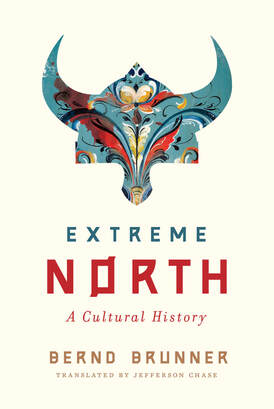
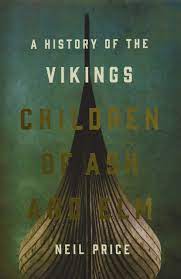


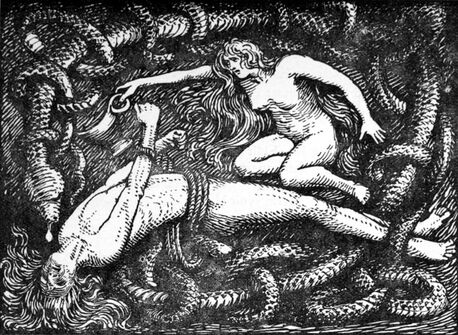

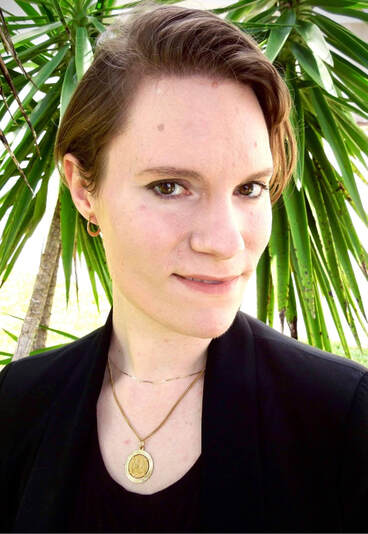



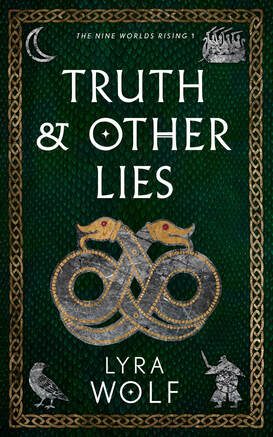
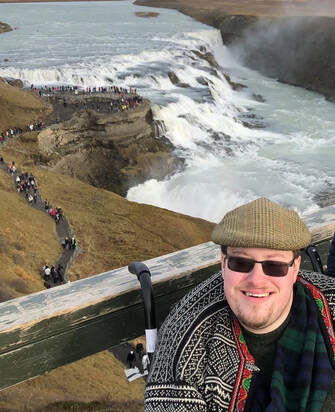
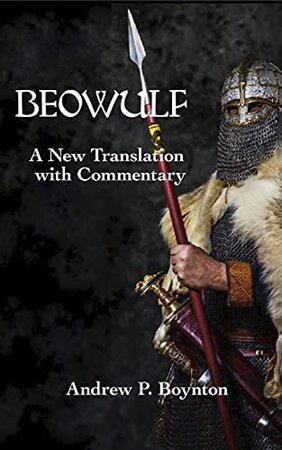
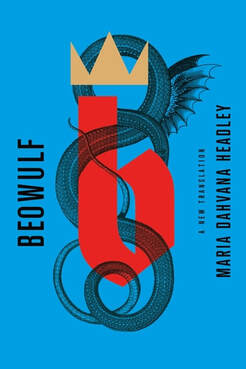
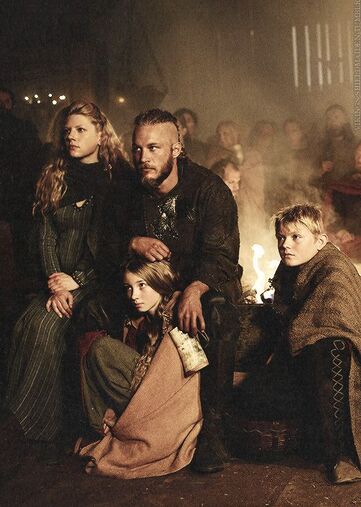
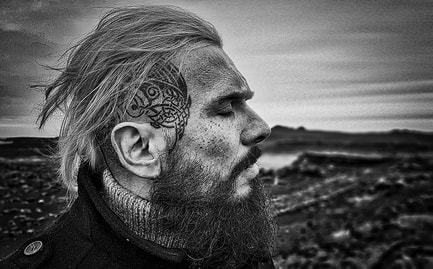
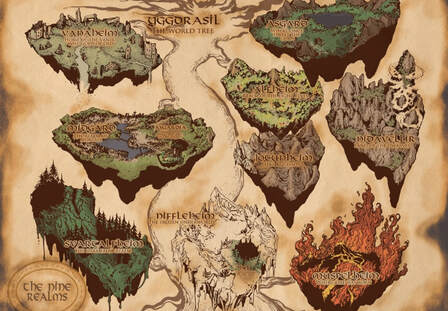
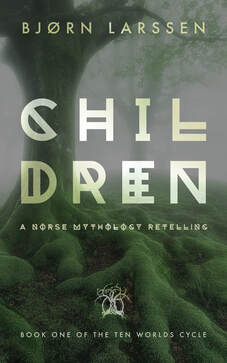
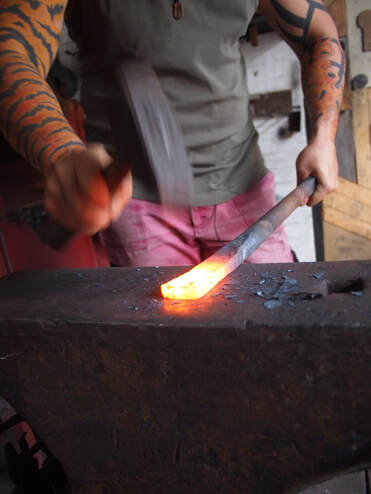
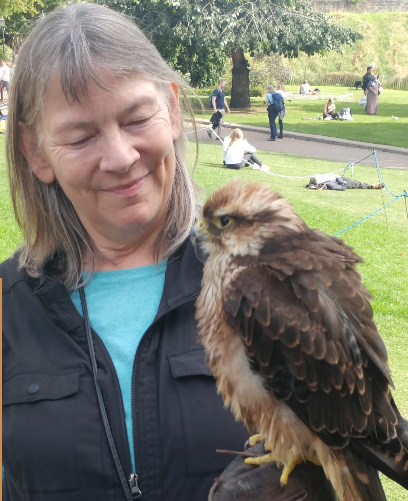

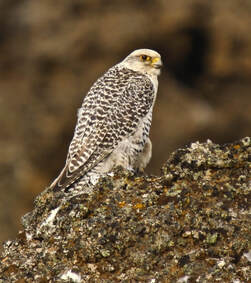

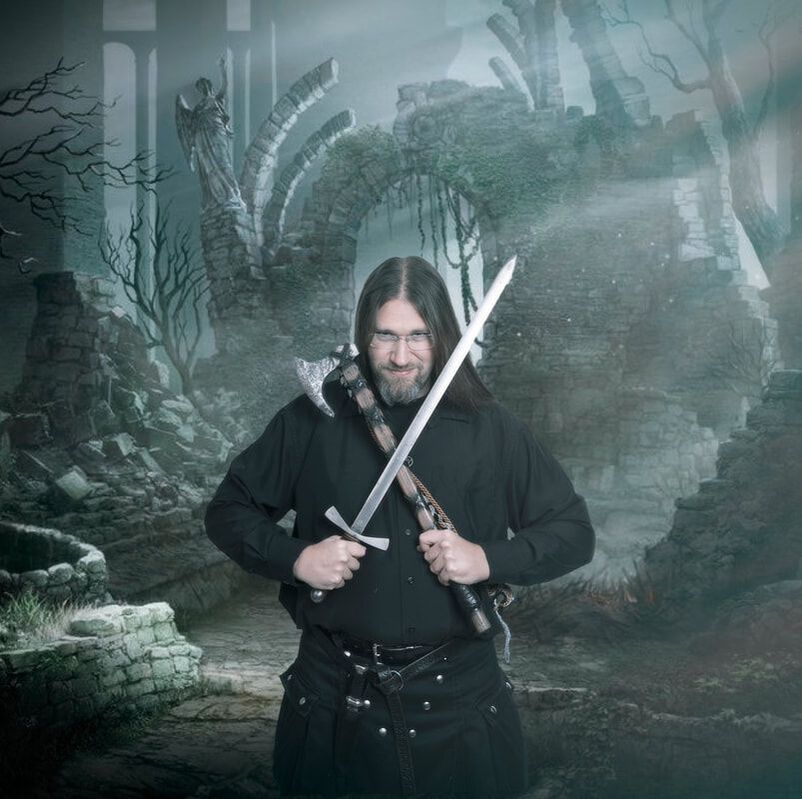
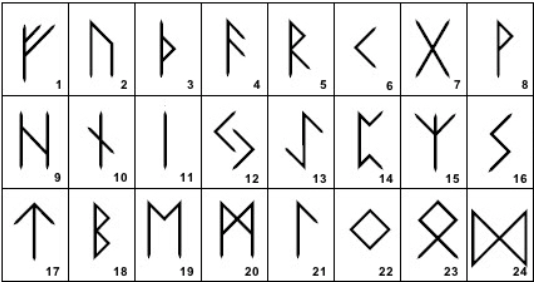

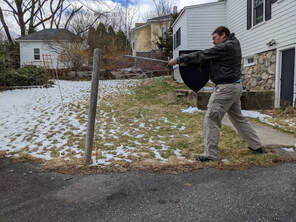
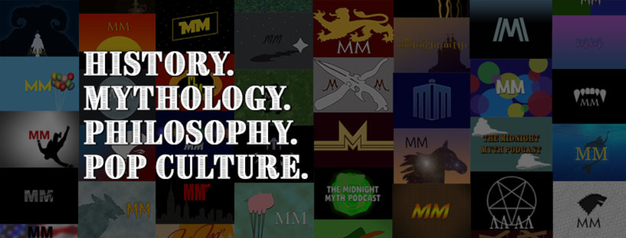
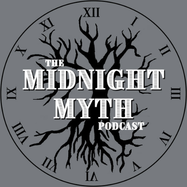
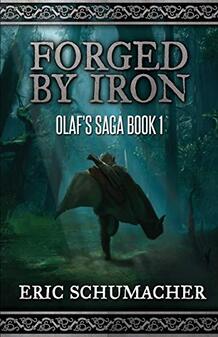

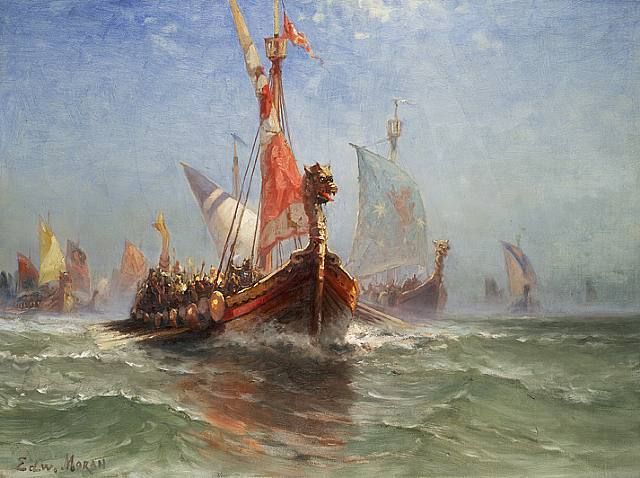

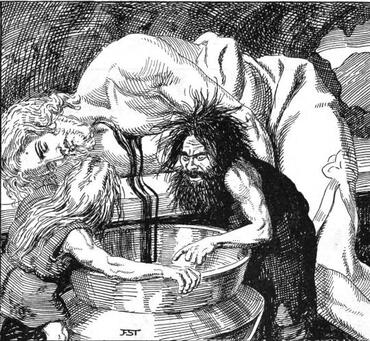
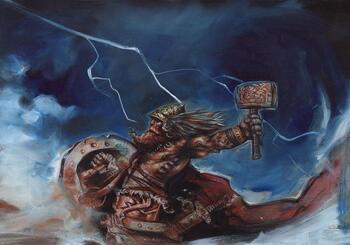
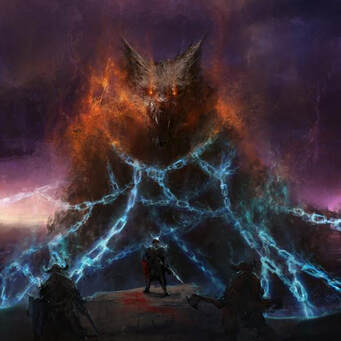

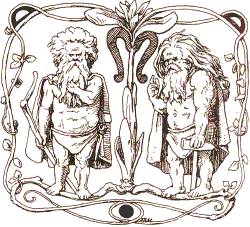
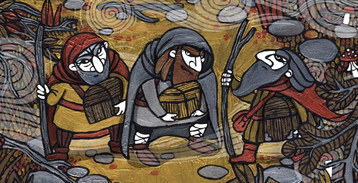
 RSS Feed
RSS Feed
